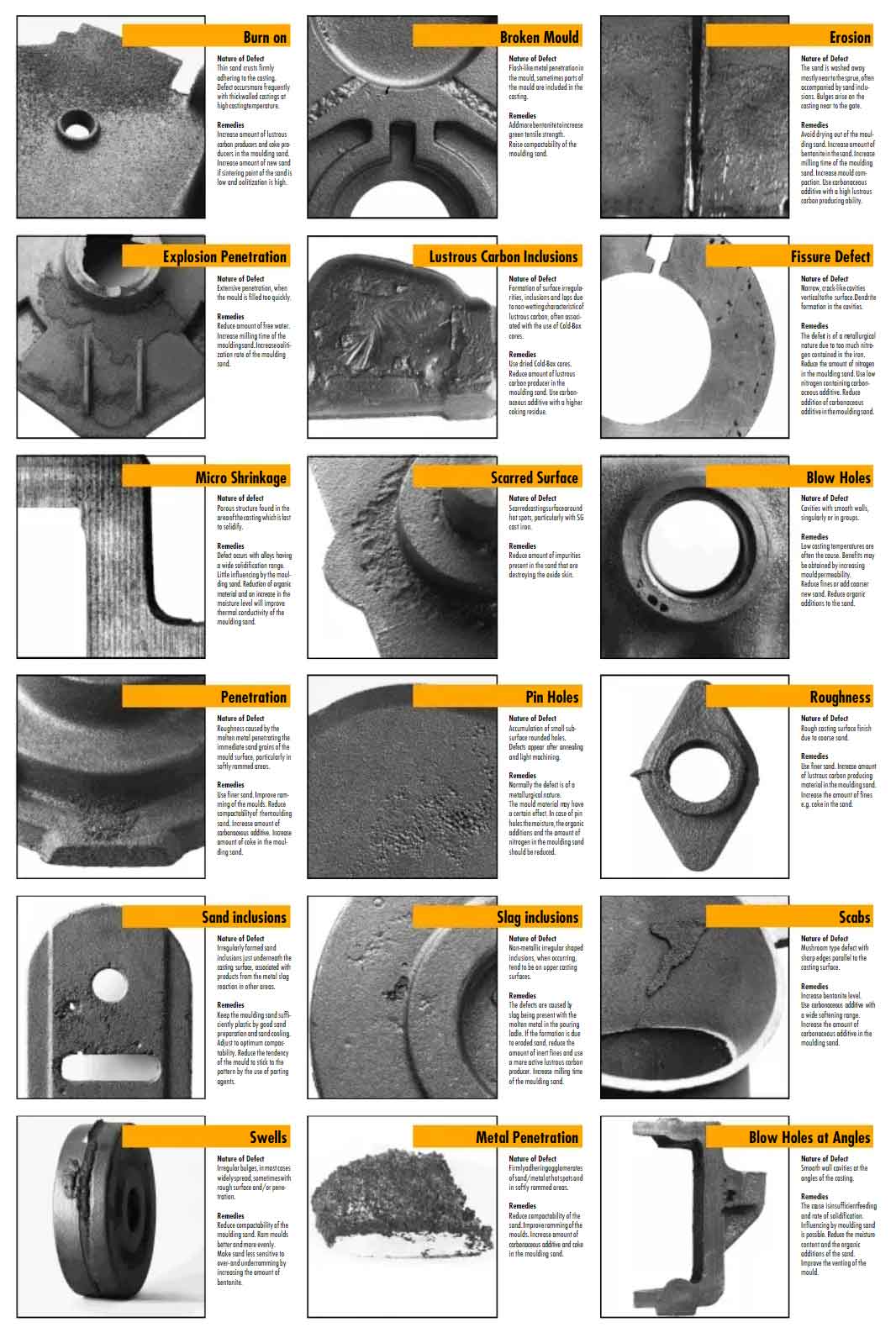Casting defects can have a significant impact on the mechanical properties and performance of cast components. The presence of defects can compromise the structural integrity and reduce the overall quality of the final product. Some of the common casting defects and their effects on mechanical properties and performance are as follows:

- Porosity and Inclusions:
- Porosity and inclusions reduce the density and homogeneity of the material, leading to a decrease in mechanical strength and ductility.
- They can act as stress concentrators, leading to premature failure under load, particularly in critical areas.
- Shrinkage Defects:
- Shrinkage defects can cause internal voids or cavities, reducing the cross-sectional area and leading to lower mechanical strength.
- In extreme cases, they may result in cracking or internal delamination, further weakening the part.
- Cold Shuts and Misruns:
- Cold shuts and misruns can create incomplete fusion zones, resulting in weak regions that are susceptible to fracture.
- These defects can compromise the load-bearing capacity of the part and affect its overall performance.
- Hot Tears and Hot Cracks:
- Hot tears and hot cracks can introduce weak planes along the grain boundaries, lowering the material’s resistance to cracking and propagation.
- These defects can result in catastrophic failure under dynamic or cyclic loading conditions.
- Metal Penetration:
- Metal penetration can alter the surface finish and dimensions of the part, affecting its fit and function within assemblies.
- It may also introduce stress concentrations or interfere with mating components.
- Distortion and Warpage:
- Distortion and warpage can cause dimensional inaccuracies and misalignments, affecting the functionality of the final product.
- They can lead to difficulties in assembly and hinder the part’s performance.
- Blowholes and Gas Defects:
- Blowholes and gas defects can decrease the material’s density and integrity, reducing its load-bearing capability.
- These defects can also increase the susceptibility to corrosion and other environmental degradation.
Casting defects not only compromise mechanical properties but may also adversely affect the performance of the final product. For critical applications, such as aerospace, automotive, or medical components, the presence of defects can lead to safety hazards and component failure. Therefore, it is crucial for foundries to implement rigorous quality control measures to detect and rectify defects early in the casting process.
Non-destructive testing (NDT) techniques, like X-ray inspection, ultrasonic testing, and dye penetrant testing, can be employed to identify hidden defects and ensure the quality of cast components. Additionally, advanced simulation and modeling tools can aid in optimizing the casting process to minimize defects and enhance the mechanical properties of the final product. Collaborative efforts between foundries, engineers, and end-users are essential to address casting defects and achieve superior performance in cast components.
